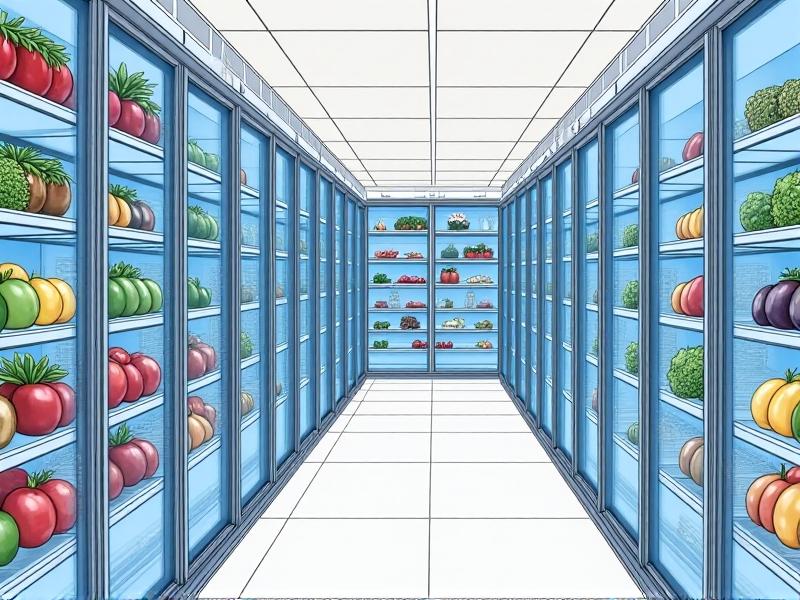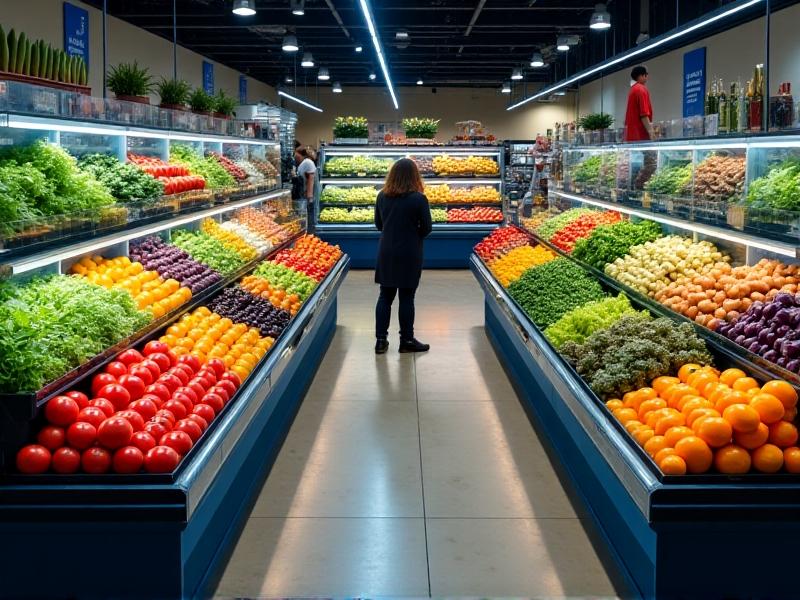Combining Refrigeration and Airflow for Preservation
The Science Behind Refrigeration and Airflow
Refrigeration and airflow are two critical components in the preservation of perishable goods. Understanding the science behind these processes can help optimize storage conditions and extend the shelf life of products. Refrigeration works by lowering the temperature, which slows down the metabolic processes of microorganisms and enzymatic reactions that cause spoilage. Airflow, on the other hand, ensures that the cold air is evenly distributed, preventing hotspots and maintaining a consistent temperature throughout the storage area.
When combined, refrigeration and airflow create a synergistic effect. Proper airflow enhances the efficiency of the refrigeration system by ensuring that the cold air reaches every corner of the storage space. This is particularly important in large storage facilities where uneven cooling can lead to spoilage. Additionally, airflow helps remove excess moisture, which can otherwise lead to the growth of mold and bacteria.

Historical Evolution of Refrigeration and Airflow Techniques
The history of refrigeration and airflow techniques dates back to ancient civilizations, where ice and natural airflow were used to preserve food. The invention of mechanical refrigeration in the 19th century revolutionized food preservation, making it possible to store perishable goods for extended periods. Early refrigeration systems relied on natural convection for airflow, but as technology advanced, mechanical fans were introduced to improve air circulation.
In the 20th century, the development of HVAC (Heating, Ventilation, and Air Conditioning) systems brought significant advancements in airflow control. These systems allowed for precise regulation of temperature and humidity, further enhancing the preservation of perishable goods. Today, modern refrigeration systems are equipped with sophisticated airflow management technologies that optimize cooling efficiency and energy consumption.

Modern Applications in Food Preservation
In the modern food industry, the combination of refrigeration and airflow is essential for preserving the quality and safety of perishable goods. From farm to table, these technologies play a crucial role in maintaining the freshness of fruits, vegetables, dairy products, and meats. In cold storage facilities, advanced airflow systems ensure that the temperature is uniformly distributed, preventing spoilage and extending the shelf life of products.
Supermarkets and grocery stores also rely on refrigeration and airflow to keep their produce fresh. Open refrigerated display cases use carefully designed airflow patterns to maintain the optimal temperature while allowing customers to access the products easily. In the transportation sector, refrigerated trucks and containers use airflow systems to ensure that perishable goods remain fresh during transit.

Energy Efficiency and Environmental Impact
As the demand for refrigeration and airflow systems continues to grow, energy efficiency and environmental impact have become critical considerations. Modern refrigeration systems are designed to minimize energy consumption while maintaining optimal cooling performance. Variable speed compressors, energy-efficient fans, and advanced insulation materials are some of the technologies used to reduce energy usage.
Airflow management also plays a significant role in improving energy efficiency. By optimizing airflow patterns, it is possible to reduce the workload on refrigeration systems, leading to lower energy consumption. Additionally, the use of environmentally friendly refrigerants, such as hydrofluorocarbons (HFCs) and natural refrigerants like ammonia and carbon dioxide, helps minimize the environmental impact of refrigeration systems.
Innovations in Refrigeration and Airflow Technology
The field of refrigeration and airflow technology is constantly evolving, with new innovations emerging to address the challenges of food preservation. One of the most promising developments is the use of smart sensors and IoT (Internet of Things) technology to monitor and control refrigeration systems in real-time. These systems can adjust temperature and airflow settings based on the specific needs of the stored products, ensuring optimal preservation conditions.
Another innovation is the development of hybrid refrigeration systems that combine traditional refrigeration with alternative cooling methods, such as thermoelectric cooling and magnetic refrigeration. These systems offer the potential for greater energy efficiency and reduced environmental impact. Additionally, advancements in airflow modeling and simulation tools allow for the design of more efficient airflow systems that maximize cooling performance while minimizing energy consumption.
Challenges and Future Directions
Despite the advancements in refrigeration and airflow technology, several challenges remain. One of the primary challenges is the need to balance energy efficiency with the demand for increased cooling capacity. As the global population grows and the demand for perishable goods rises, refrigeration systems must become more efficient to meet this demand without exacerbating environmental issues.
Another challenge is the need to develop more sustainable refrigeration solutions. The phase-out of harmful refrigerants, such as chlorofluorocarbons (CFCs) and hydrochlorofluorocarbons (HCFCs), has led to the adoption of alternative refrigerants, but further research is needed to identify even more environmentally friendly options. Additionally, the integration of renewable energy sources, such as solar and wind power, into refrigeration systems holds promise for reducing the carbon footprint of food preservation.
Conclusion
The combination of refrigeration and airflow is a cornerstone of modern food preservation. By understanding the science behind these technologies, exploring their historical evolution, and embracing modern applications and innovations, we can optimize the preservation of perishable goods while minimizing energy consumption and environmental impact. As we look to the future, continued research and development will be essential to address the challenges and unlock the full potential of refrigeration and airflow technology in the quest for sustainable food preservation.







